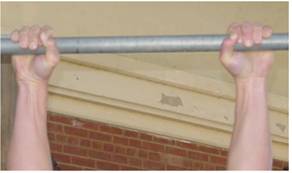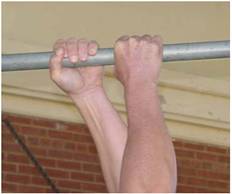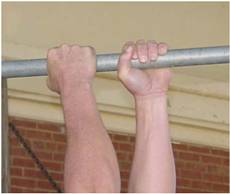Calisthenics (Muscular Strength and Endurance Training - MSE)
SECTION IV
CALISTHENICS
(Muscular Strength and Endurance Training)
Muscular strength and endurance (MSE) refers to your ability to overcome resistance in one single effort (muscular strength) or in repeated efforts over a period of time (muscular endurance). IMT will challenge your strength and endurance on obstacle courses, buddy carries, the bayonet assault course, foot marches, and during daily activities that involve lifting.
Getting Started
MSE training does not require a gym or expensive equipment. In fact, it is best to start with just the resistance of your own body to develop proper form. Calisthenic exercises can be performed at home in a relatively small space and in a time-efficient manner. They build strength and endurance by challenging control of your body weight as you move into and out of different positions. Calisthenics are a form of MSE training of moderate intensity that uses your own body weight to develop and maintain muscular fitness. Calisthenics are an integral part of this fitness program for muscular strength and endurance. In addition to the development and maintenance of muscular strength, the physiologic benefits of resistance training include increases in bone mass and in the strength of connective tissue. This is particularly important to establish injury control in the beginning stages of an exercise program. The conditioning drill that you will follow in this program consists of ten exercises that train the major muscle groups of the arms, shoulders, chest, abdomen, back, hips, and legs. The primary goal of the muscular strength and endurance aspect of this program is to develop total body strength and endurance in a relatively time efficient manner. These calisthenic exercises should be performed every day, and more frequent training with additional sets and repetitions will bring about larger strength gains.
Conditioning Drill 1
Conditioning Drill 1 (CD 1) consists of a variety of calisthenics that develop motor skills while challenging strength, endurance, and flexibility. The exercises in the drill are always performed in the sequence listed below. Conditioning Drill 1 is always used in the conduct of the warm-up and cool-down.
Conditioning Drill 1:
1. The Bend and Reach
2. The Rear Lunge
3. The High Jumper
4. The Rower
5. The Squat Bender
6. The Windmill
7. The Forward Lunge
8. The Prone Row
9. The Bent-Leg Body Twist
10. The Push-up
For a complete explanation of Conditioning Drill 1, see Appendix A.
Conditioning Drill 2
Conditioning Drill 2 (CD 2) is designed to enhance upper body strength, endurance, and flexibility. As in Conditioning Drill 1, all exercises are to be performed in the sequence listed. You should try to find a partner(s) to assist you, when performing the Pull-ups. CD 2 consists of the following exercises:
Conditioning Drill 2:
1. The Push-Up
2. The Sit-Up
3. The Pull-Up
For a complete explanation of Conditioning Drill 2, go to Appendix D. For more information on the hand position for the Pull-up, see below.
HAND POSITIONS
A variety of hand positions are employed throughout the drills to thoroughly train the musculature of the arms, forearms and hands. Hands are placed shoulder width apart with thumbs around the bar for the overhand grip.

Overhand Grip

Alternating Grip Left

Alternating Grip Right